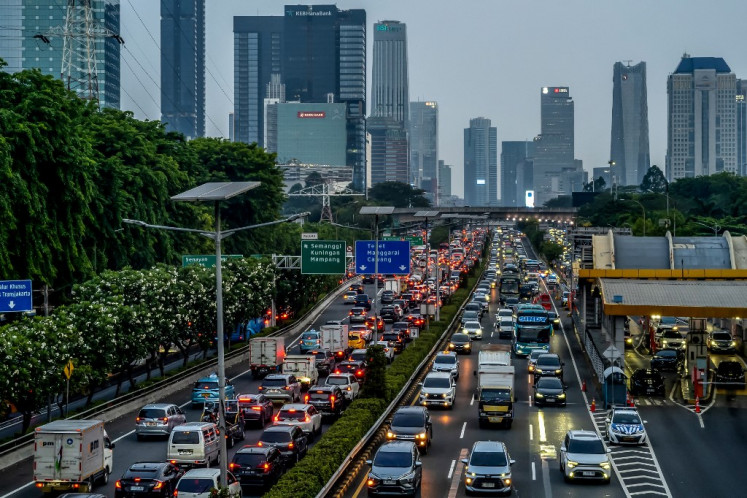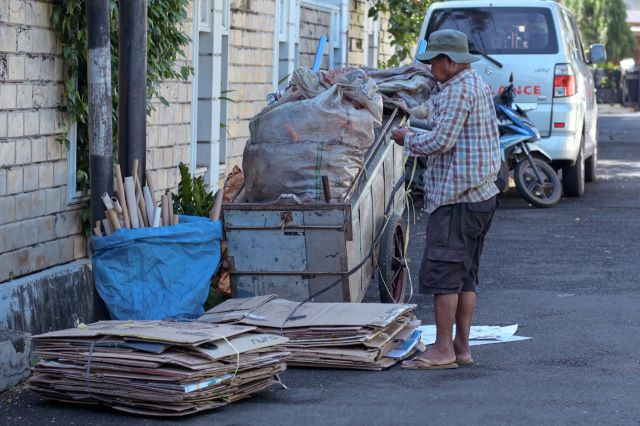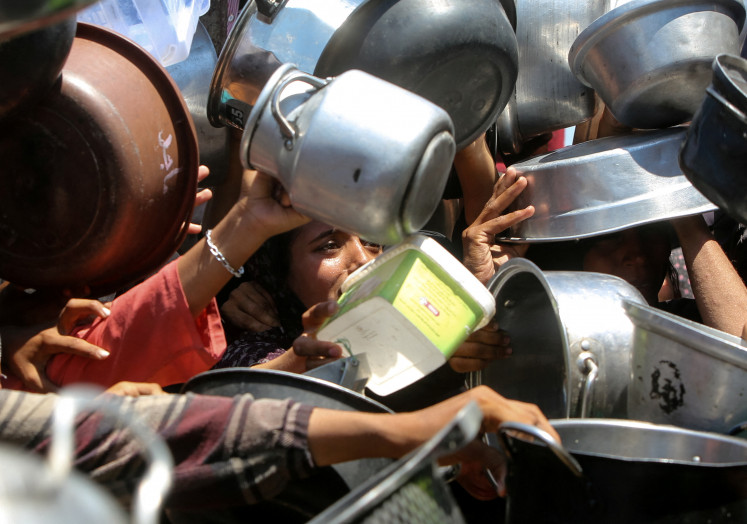Popular Reads
Top Results
Can't find what you're looking for?
View all search resultsPopular Reads
Top Results
Can't find what you're looking for?
View all search resultsHot spots: A burning issue for Indonesia
Several days ago, numerous media sources reported the occurrence of haze in several cities in Riau, South Sumatra, Central Kalimantan and West Kalimantan provinces
Change text size
Gift Premium Articles
to Anyone
Several days ago, numerous media sources reported the occurrence of haze in several cities in Riau, South Sumatra, Central Kalimantan and West Kalimantan provinces. The haze was generated by hot spots or fires in Sumatra as well as in Kalimantan.
The recent January-July report listed 6,221 spots, double from the previous year. A hot spot is generally referred to as a forest fire, even though it also occurs outside forest areas such as in large palm plantations and traditional farmlands.
Hot spots not only disturb transportation systems, but also induce respiratory-related diseases and contribute to the increase of carbon emissions in the atmosphere, which subsequently increases global warming effects.
In the next few months, we expect more fires to occur as the weather grows drier and the rainfall becomes more sporadic. During the same time, we may receive angry complaints from Malaysia as well as Singapore because the haze from Indonesia can negatively impact their air quality as well as their economies.
The use of fire dates back to early civilization when our ancestors used fire as a tool to protect themselves from predators and to improve their quality of life. Today, fire as a form of prescribed burning is still practiced by U.S. foresters to control weeds as well as to maintain pine forests in the southern states.
The practice is initiated by cutting small trees and bushes by farmers using traditional machetes, burning the slashed vegetation, and then planting the site with staple crops such as dry-land rice, cassava and corn. After a short period of time, usually three to five years, the farmer allows the site to lie fallow and searches for new sites where the slash-and-burn processes are repeated.
This practice obviously is not right and can trigger the spread of fire. For outsiders, the practice appears to be illegal and disturbs the environment. However, for the traditional and low-income farmers, the practice is indeed key to their survival.
With the soaring price of fertilizers and herbicides and increasing daily living costs, there are limited alternatives available for the farmers to choose from, and the slash-and-burn practice may be the only feasible way to keep their dry lands productive. As long as the farmers do not have any other alternative means to support themselves, the burning will continue to occur.
Imposing strict law enforcement on this unfortunate group will definitely not be successful because traditional farmers will continue the practice in order to meet their basic needs and is therefore, beyond the domain of the law.
Another source of hot spots is from palm plantations owners. Often they use fire to clear their land because it is a very cheap method. If this is the case, then it is certainly shameful and unexcusable behavior. However, in reality, very few companies have been punished for any illegal land clearing procedures.
The frequent fires on the swamp and peat ecosystems generate irreversible, negative environmental impacts. Widespread illegal logging and the majority of hot spots are located in the eastern parts of Sumatra and Western and Central Kalimantan. There have also been massive conversions of lowland, peat and swamp forests into primarily palm plantations.
The combination of these considerable changes of forest cover causes the forest hydrology to no longer properly function; it is no longer able to control floods in the rainy season or to supply a sufficient amount of water in the dry season because the land is no longer able to absorb water. If it happens to peat and swamp ecosystems, it is a recipe for environmental disasters.
The fate of peat or swamp ecosystems is basically determined by its organic soils. If the forest ecosystem is still intact, the soils can hold three to 20 times more water than their dry weight. If the forest trees are gone, then the soils fail to retain the water. In these degraded swamp and peat forests, the organic soil eventually becomes a pile of dry biomass, which is easily burned if a fire either intentionally or unintentionally occurs.
The burning irreversibly changes the peat's soil structure in such a way that it decreases the soil's ability to retain water. The degraded peat soil structure generates two further consequences. On the one hand, it is very sensitive to fire and significantly causes a decrease in the river's water level in the dry season. On the other hand, rapid runoff causes the river to flood in the rainy season.
In these degraded ecosystems, the more frequent and extensive the hot spots occur in the dry season, the more frequent and severe the flooding will be in the following rainy season. The impact of these events further degrades the environment when the effects of global warming is considered.
In the worst-case scenario, hot spots can turn the dry and rainy seasons into fire and flood seasons and cause the rivers to be no longer navigable -- resulting in economic hardship for all communities who use river systems as their primary means of transportation.
After all, a hot spot is not just simply a forest fire problem, but can become an anthropological event triggering both environmental and economical hardships. The management of hot spots must be integrated and taken seriously.
To suppress hot spots, the welfare of indigenous people must be improved, strict laws must be enforced, the functions and values of forest ecosystems must be understood and appreciated and environmental problems generated by hot spots must be solved with fairness and honesty.
The writer is Assistant Director for Academic Affairs and Master Program of Natural Resources and Environmental Management, University of Bengkulu. He can be reached at Satya1812@yahoo.com










